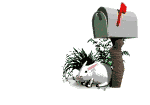
Setting up your classroom is one of the most important steps for a successful year. Following are some of the tricks and ideas I have learned over the years. I hope you find them to be helpful. And as always if you have any comments or suggestions email me and I will add them to the article.
Jenni

The first step in setting up your classroom is the decision on how you want your room divided. Is your room going to be center based or divided into work stations? A center based classroom is a room that is divided into different subject areas such as: home center, blocks, science, library/listening, manipulatives and art. (We will go into greater detail on the contents of each center later in the article.) Work stations are daily or weekly activities that are set out and available to the children at all times. Such stations are: a building project with blocks and goal, an art project with directions and materials and so forth. I have found that a combination of each method works best, and so the rest of this article will focus on this combination.
Next you must decide on how the centers in your room will be divided. Through room experimentation the best layout that I have found is what I term as volume division. By this I mean put quiet centers such as library/listening and science next to each other. The reasoning behind this is simple, a child who is listening to a story in the library/listening center would be distracted by the imaginative play of home center. It is important to the children to have a quiet place to escape to through out the day.
Keeping the volume division in mind you should now decide which centers belong where in your classroom. For room appearance purposes the louder centers, such as home center and blocks, should be kept towards the rear of your room. Keeping the noise to the back gives you a lot of quiet space to work with children individually and converse with parents.
All of your centers should posess shelving that is on the child's level. Remember children should NOT be made to feel small in their daily surroundings. Containers for toys should be child friendly. This means that corners should be rounded and lids should not fit too tightly.
Now it is time to label your centers. Each center should have its own sign with pictures or drawings along with the written word. The pictures should relate simply to the main heading. Hang these signs from your ceiling in the middle of each learning center. This allows for the children and visitors to see with words and pictures the location of each center. In addition to the main center labels it would also be wise to label your shelving. By doing this you are allowing the children to see visually where each individual toy belongs. Shadow labeling is one way of showing the location of toys. By shadowing you simply trace the toy and decorate with crayons or markers and attach to the proper shelf. This is a great idea for the very young child.
Now that you have your room arranged it is time to decide what toys to place on the shelves. The lists that follow will give you two different types of toys to place on your shelves, store bought toys and teacher made toys. Next to the teacher made items is placed (TM). When directions become available a "NEW" icon will be placed next to the description.
child sized refrigerator, stove and sink
telephone (toy or real)
old telephone book
plastic food and dishes
pots and pans
old clothing and shoes
doll bed
stuffed animals
multiculural babies
place mats and napkins
hot pads
rubber gloves
iron and ironing board
old junk mail
menues
pencil and paper
food boxes and cans (emptied and washed)
hair care products
empty makeup items
hairdrier (chord cut off)
wodden blocks
plastic or childsized tools
animals (farm and wild)
Big legos
cars and trucks
carpet with road design
wooden people (community helpers)
paper and crayons
magnets
motion bottles (TM)
magnifying glass
pictures of plants and animals
shells and rocks
leaves from trees
dinosaurs
counting rings
paper and crayons
weather display (TM)
tornado bottle (TM)
science books
book shelf
selection of books
child's tape player
books on tape
paper and crayons
bean bag chair
felt board
felt story pieces
board puzzles (bought and TM)
floor puzzles
pegs and peg board
lacing cards
small legos
small counting blocks
barbies and/or action figures
folder games (TM)
caryons and paper
construction paper small and large
drawing paper
pencils
crayons (TM)
markers
tempra paint
water colors
paint brushes
stencils
playdough (TM)
child safety scissors
scrap papers
buttons
cotton
craft sticks
crepe paper
glue or paste
noodles
beans
All of the items listed above should be left out for the children to use at any point during the day. A child should never be discouraged from using the materials in your classroom unless you feel there is a hazard involved.


